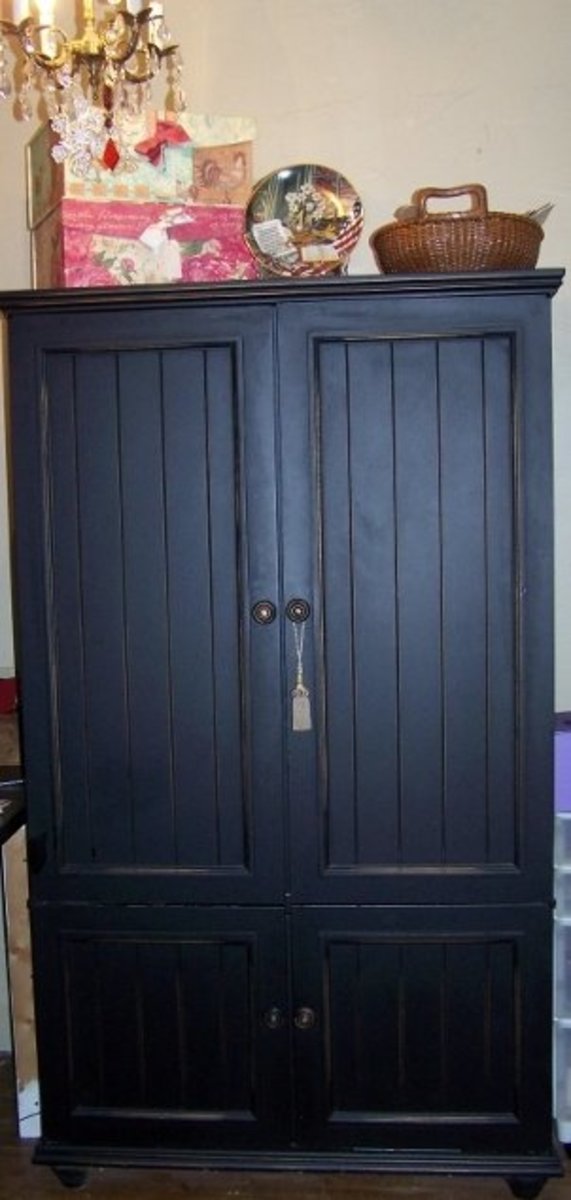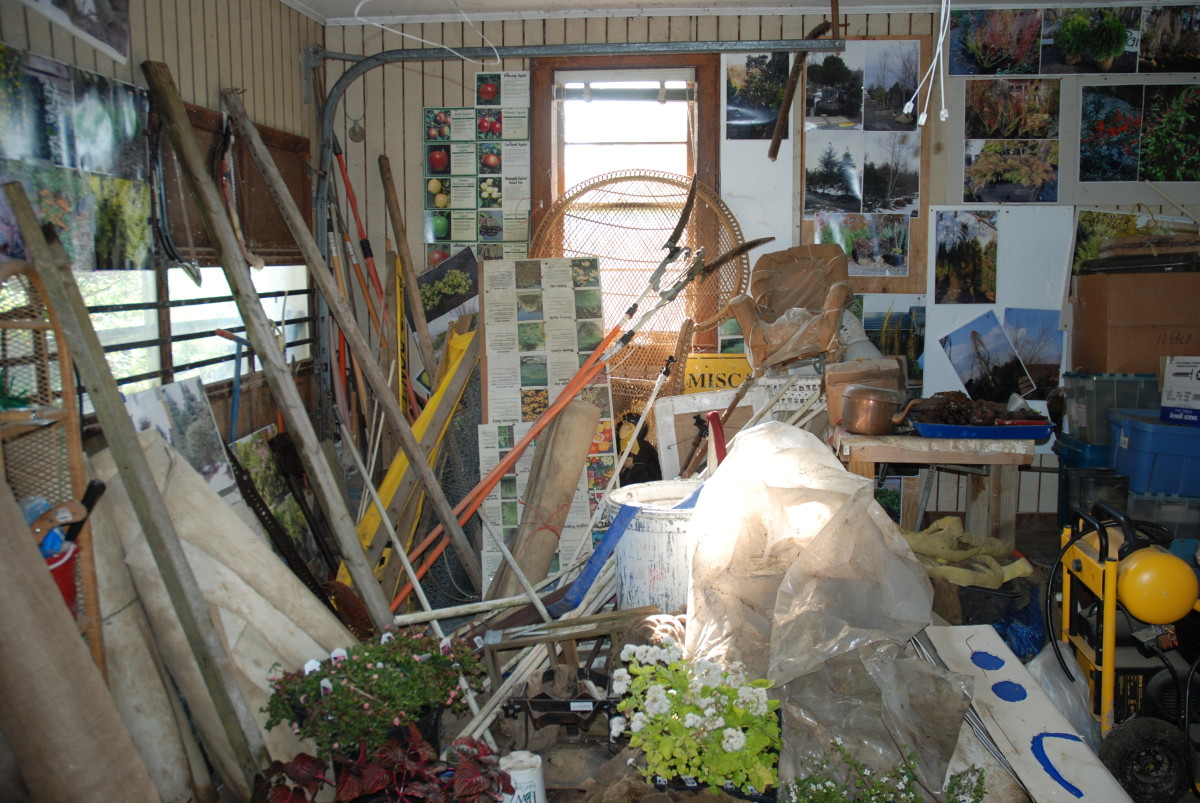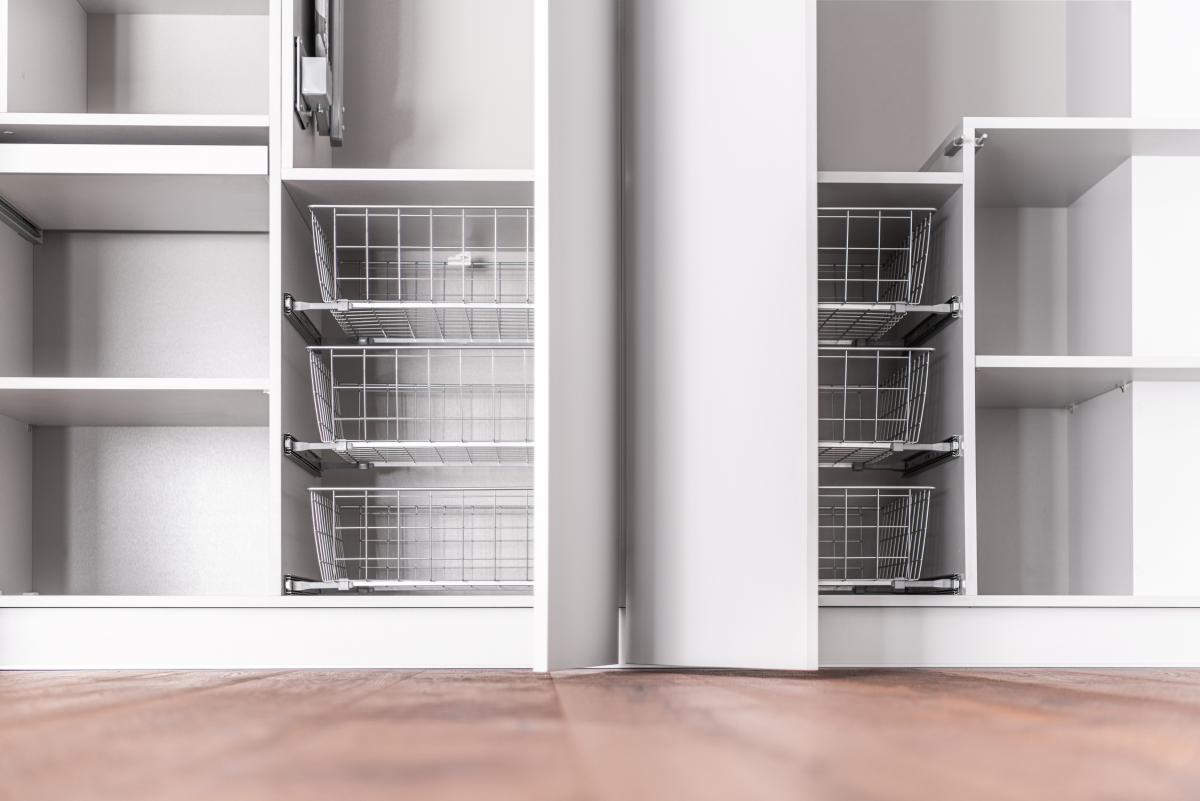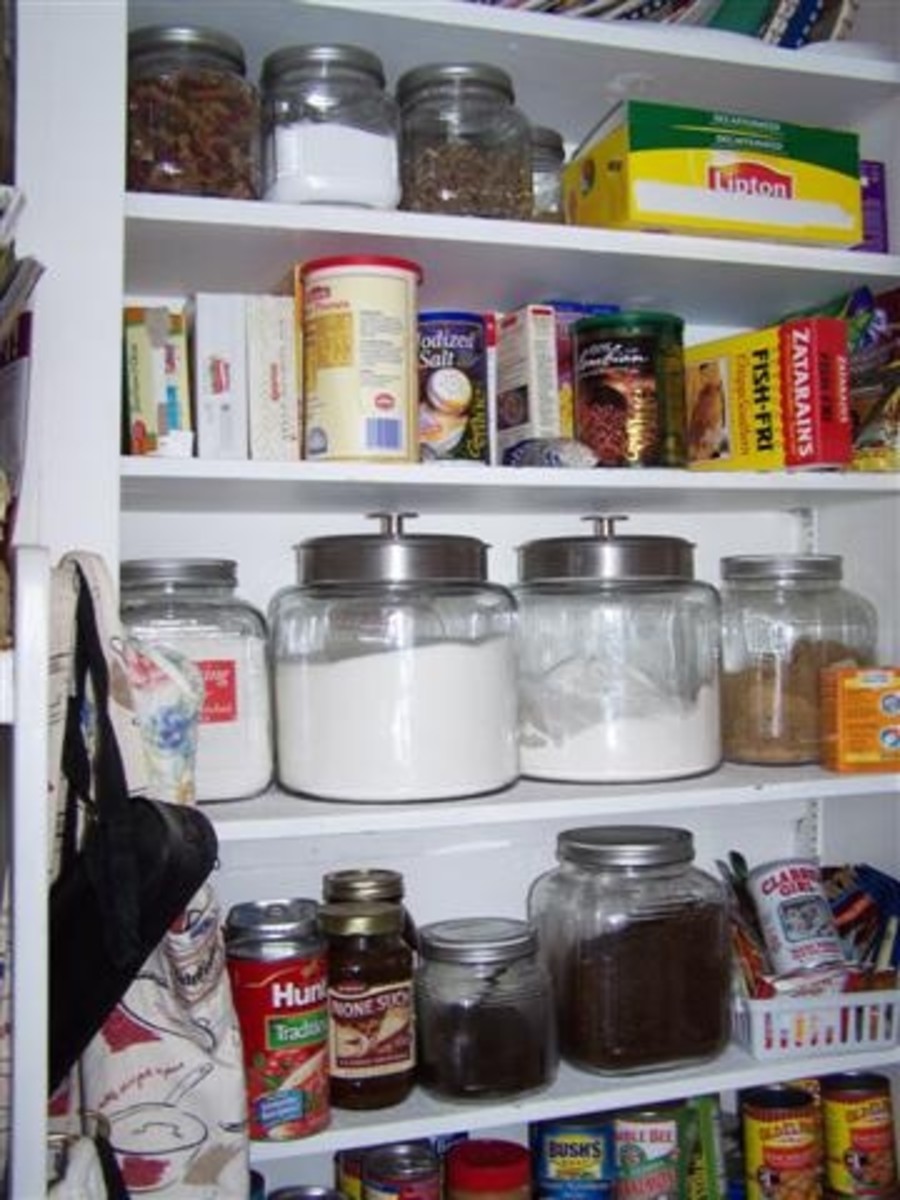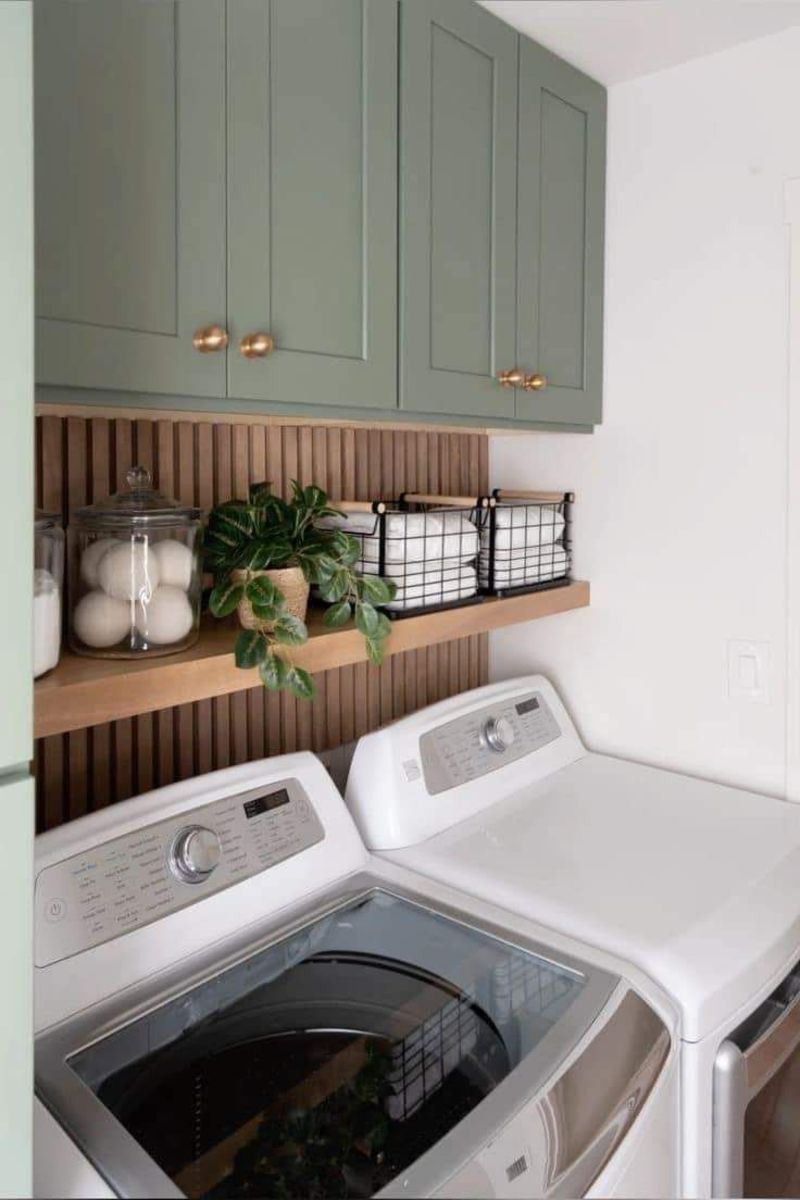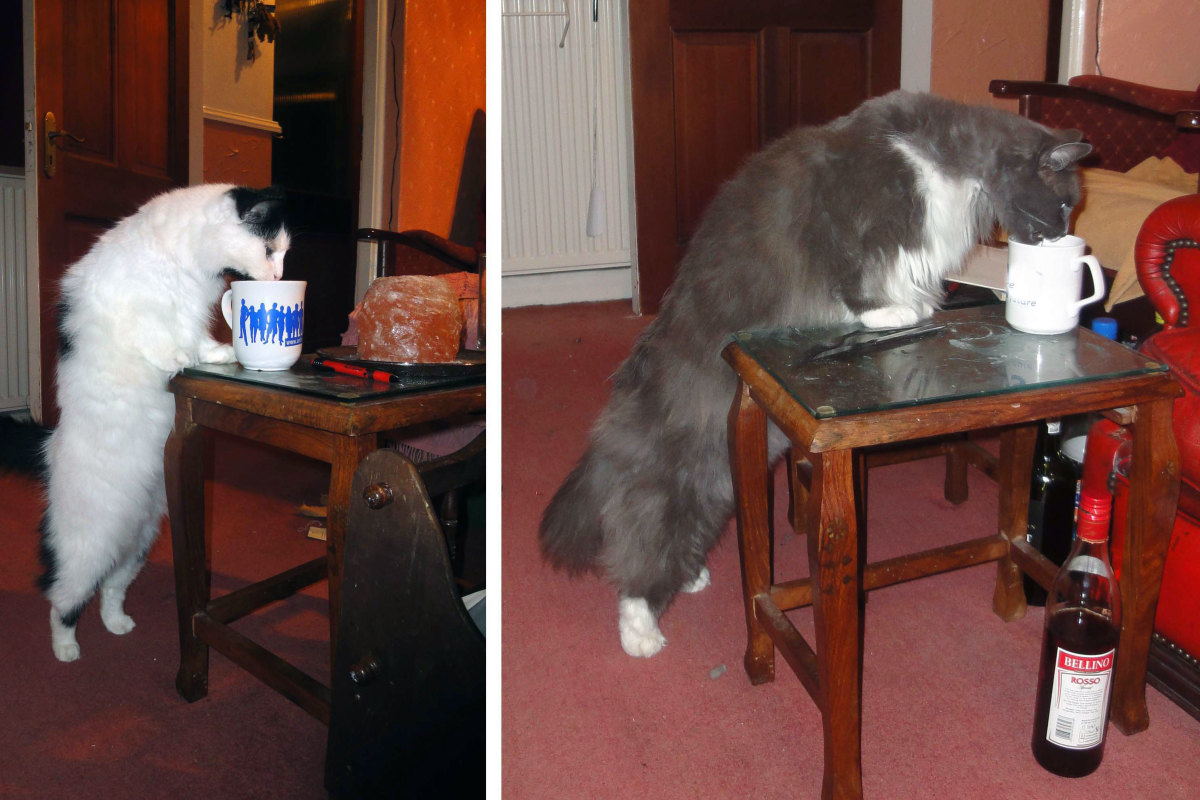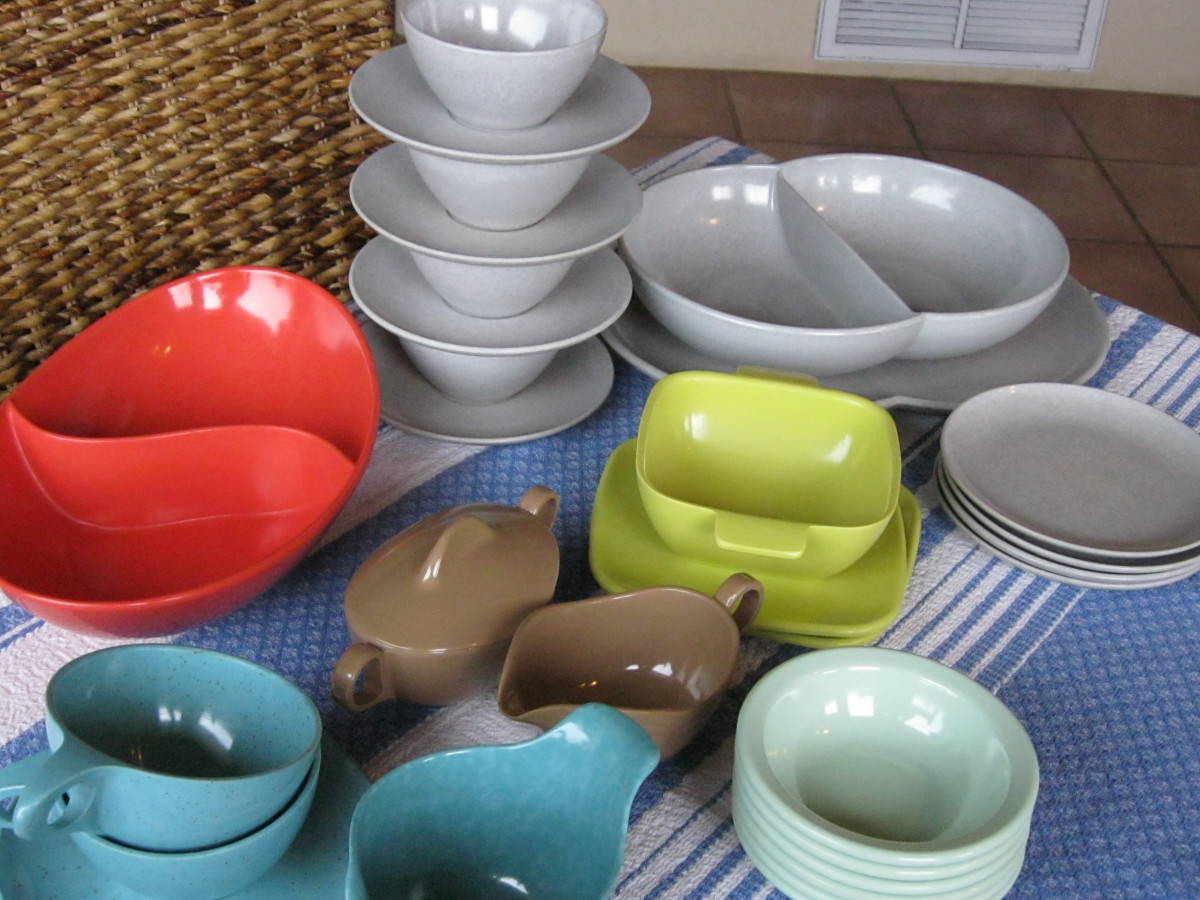Too Much Stuff and Too Few Cupboards? The Art of Finding Space
In our quest for additional, usable space, realize nothing could match the pictures found in magazines where rooms are spacious and tidy, counters clear, and shelves never overflow. Perhaps, before the photo shoot, all the stuff people use and strew around the house is thrown into the backyard then dragged back in later. But those uncluttered rooms, however fake, are appealing. So we dream of affording a larger house or pour over catalogues looking at storage units or ponder a kitchen makeover.
The kitchen may be the most frustrating room because it serves as the all-purpose room and dumping ground for everything, everyone, and many tasks. Items not used in the kitchen may be stored in its cupboards because it often has more storage space than anyplace else in the house. So for our exercise in the art of finding space that can be used easily and efficiently, let us focus on the kitchen.
The basics of this approach involve:
- sorting and discarding;
- making notes about how items could be arranged before moving things around;
- plus making sketches as a visual aid to help plan the use of counter and floor space.
The goal is to aid you to devise and implement a systematic storage and retrieval arrangement that suits your physical space and your methods of working.
Many books will instruct the reader as to how his or her space should be arranged. However useful the ideas, this approach ignores both the idiosyncrasies of individuals and the physical differences of kitchens. When arrangements do not suit you, the reader, it is hard to establish habits of use that keep the kitchen tidy and useable. The idea of this essay is not to hand out a blueprint for arranging your kitchen, but to help you devise a practical scheme of your own.
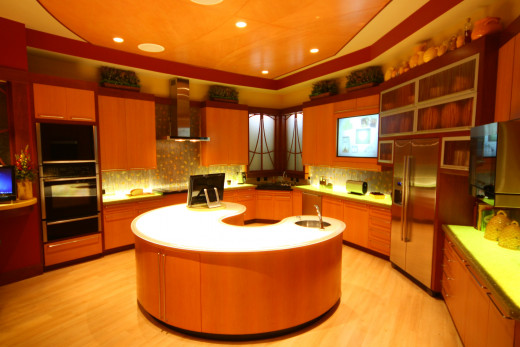
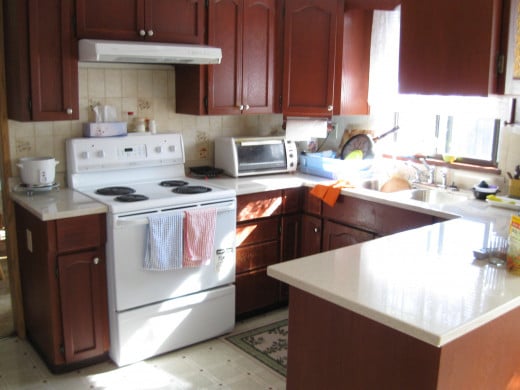
Getting Started
Do not tackle the whole kitchen immediately. Think of this as an on-going project, to be done in stages. Tackle a corner. To attempt too much in one session can lead to confusion and exhaustion. Consider the following aspects as you work.
Decide what items to keep and what to toss. Gearing yourself to throw out items may be the most important aspect of this project
Sort items by use—type, location, and frequency.
Consider the size, particularly the weight, of objects.
Ponder physical changes to the kitchen. Changes can run from affixing towel rods to adding a freestanding cupboard to remodeling.
A final consideration, for those with young children, is safety. Reducing clutter frees up space for storage, out of reach and out of sight, of potentially dangerous items.
No matter how meticulously you arrange your home things can go wrong. There is no reason every able-bodied adult should not learn all aspects of CPR—choking hazards, rescue breathing, and administering chest compressions. Infant, child, and adult CPR are all a little bit different due to the differences in sizes. To find CPR courses contact the American Red Cross at www.redcross.org or 1 (800) 737-2767 (red-cros), the American Safety and Health Institute at www.his.com or 1 (800) 447-3177, or a local hospital.
To Keep or Not to Keep and then to Sort, aye, There’s the Rub AKA I Hate Decisions
The universe may be expanding, but not the defined spaces of rooms and cupboards. What items are needed or wanted or even identifiable? Decide what to keep, what could be sold in a yard sale or given to charity, and what should be thrown away. Discard enough items and it may be possible to see everything on a shelf at a glance. Tossing is hard. Personally, I am so afraid to throw away keys I have keys from long ago cars.
After emptying, tossing, and sorting the items from a, let us say, shelf, don’t just return objects to the shelf. While larger, more visible items might be placed together in related groups, little items may easily get shuffled around as the cupboard is used day after day. So store separate piles in separate containers which might be baskets, boxes, old plastic butter tubs, or even plastic bags. Some containers could be used permanently. For example, I keep extra dental paraphernalia in a shoebox. The box contains a small, slightly messy assortment of related items, quickly sorted through, instead of part of a big jumble on the shelf. And don’t think about where things should ideally be stored until after sorting enough items from enough shelves into enough piles.
One reason to postpone seeking the ideal space initially is you may find yourself thinking, "This stuff should be on that shelf closer to the stove and this other stuff, which we don’t use as much, could go out of the way on that higher shelf over there.” To immediately act on this impulse means more work clearing out those other shelves and making more piles. Remember, you want to do this in stages. Just make notes about your thoughts.
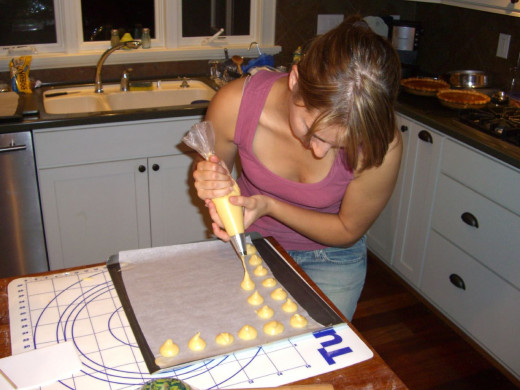
Storing
One school of thought says do a complete sort and toss of a room in one marathon session. Many people have neither the time nor the stamina for such an effort. There are also those who advocate doing nothing about re-arrangement until all sorting and tossing is finished. My thought is, after some sorting, make a few changes if they seem helpful to get a feel for what might be possible. With an eye to how specific items are used--when, where, and how often--as mentioned above, make notes and rough sketches of the kitchen, its storage areas, and associated areas such as a pantry or back hall.
Notes help keep track of items and categories. Sketches are useful to compare a variety of arrangements before moving objects, particularly larger ones, around.Where are the best locations for specific objects or groups of related objects? How do locations in the kitchen relate to one another?
To illustrate the idea of relationships, here is a simple example from my small, square kitchen. The sink, the counter, and all the cabinets are in a galley style pantry area located off one corner of the room. A narrow bookcase sits against the kitchen wall two feet from the stove and a foot before the pantry doorway. I keep spices on top of the bookcase because sometimes I mix things at the counter and sometimes I mix things directly in a pan on the stove. From the bookcase it is just a few steps either way to the spices.
Another cook might want to keep the top of that bookcase clear so she (or he) can place utensils or ingredients down as she works at the stove—or plop down a cookbook to refer to. How do you, as Chief Cook and Bottle Washer, function? What will work for you?
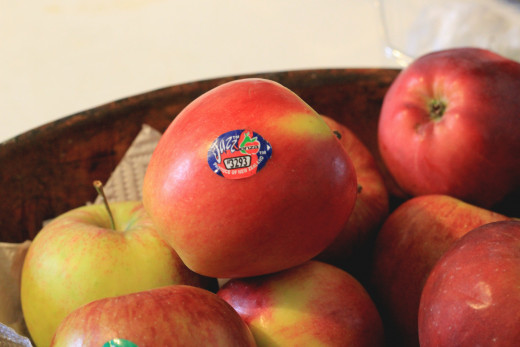
Some folks refuse to keep little appliances on their counters. Every morning they religiously take out and put away the toaster and coffee maker. Other folks think this a waste of time and energy. Most folks would like to keep some section of the counter clear. Given short counters and the many objects we like to keep close to hand, this goal may seem unobtainable. The solution is to resign yourself to the fact that some things have to be put away.
Seriously look at your counter. Are some items located there simply out of habit rather than constant usage? If so, find some other location for them. Which ones are necessary? Many years ago, I met a woman whose arms had been left weakened by a stroke. Out of necessity, she kept a great many items on her counter within arm's reach. The woman hired a new maid who, while the woman was out, efficiently put everything away. More common are the short, worrying about high shelves, and those with stiff hips, wanting to avoid bending down to use those lower cabinets.
Can some everyday items go someplace else? Could the coffee maker sit on the table? Or what might be the least annoying or the least difficult items to put away and retrieve regularly? The answer to that question generally depends on locations available. If I do an about-face from my counter, I am now facing a small bookcase of open shelving. Shuffling a toaster, coffee-maker, and blender back and forth would be easy, if I needed to--much easier than digging through a cabinet. What do you have available?
If, in your fantasy arrangement, you find yourself placing too many objects in one specific location—that first shelf of the middle cabinet, that lower cabinet nearest the stove—re-think the arrangement and the criteria for decisions. For example, do you like to organize items completely by category or more by frequency of use? One person might want to keep all cleaning supplies together. But certain items are used infrequently so another person might want to free up space under the sink, keeping only the dish liquid, soap pads, and scrub brushes there and squirreling away in some less accessible location, with other infrequently used items, the rug shampoo, saddle soap, and paste wax.
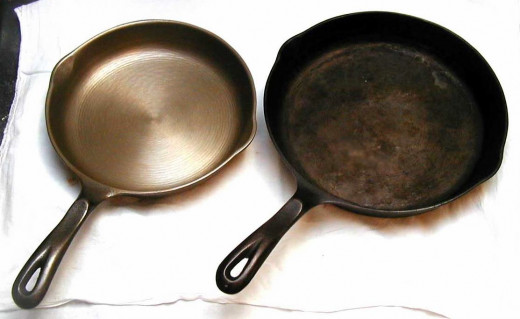
Size
Placing to the back of a shelf items used less often is a common practice. But there are other reasons for front vs. back decisions—shorter objects in front of taller objects or weight can be a factor. In a floor level cabinet, although I use both iron skillets and lightweight pots almost every day, I keep the pots to the back. Being very light, they are easier to lift out than other items including the skillets.
Eye level cabinets I handle differently. Months go by without my using canned goods. I use fresh vegetables. But I keep a few cans and, being conscious of heavier items falling, I place them to the back of the lowest shelf, my everyday shelf. There they are away from the shelf’s edge yet easy to grasp without stretching up. Teas, which I use frequently, sit on a top shelf. If they slip out of my grasp, those little boxes can fall as much as they like.
Extra Equipment
There are devices that make a space more useable. Basic ones are: cutlery trays and dividers for the drawers; various type of hooks and rods; vertical dividers that allow items to be stored standing on end; lazy susans; and that lovely innovation, the cabinet shelf that pulls out like a drawer. Said drawers can be built-in or screwed onto existing shelves.
Before spending money on new accessories, experiment with substitutes. Want to stand cake pans upright? Try a bookend first to see how they might fit on the shelf. Worried a sliding shelf drawer might feel awkward in a tight corner? Place a flat cookie sheet on the shelf and slide it out and in a few times.
Before adding anything to your kitchen, you can try it on paper first. Hooks free up space in the cupboard, but if objects hang too low under the cupboard, they might interfere with that toaster sitting snugly on the counter. Should it be moved or should the hooks be placed over a foot? Want to place a butcher block next to the refrigerator? How large can it be before it interferes with traffic flow?
When adding furniture, sketches of the room and furniture should be roughly to scale. Sketches aside, really try to visualize what it will look like. Will the piece fit the environment? Once, while in a hurry, I bought a yard sale bookcase to place in the pantry beneath some cupboards. Physically, the case fit but was so large it overwhelmed the space. I could almost hear, “I am now King of the Pantry. All shall bow before me.”
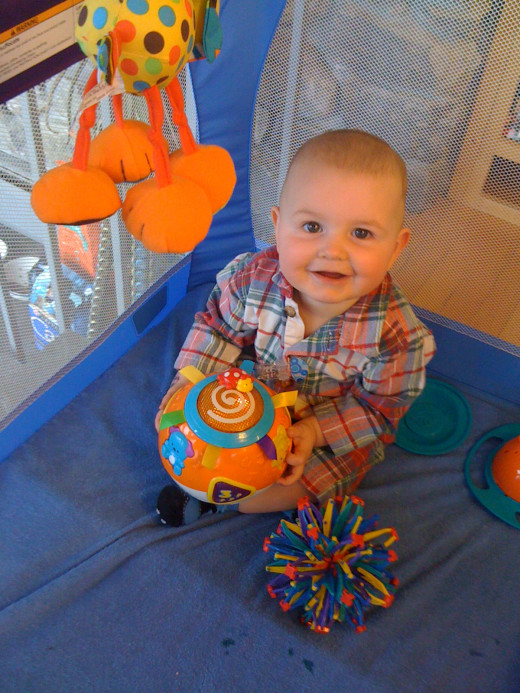
Safety
What could harm the children? Crouch down and look at the environment from a child’s level to see what they can get into. Because fewer items are safe enough to be stored on open shelving, more enclosed space will be needed. The need for ruthless culling becomes even more important. Do that before buying additional storage units.
There are websites with information about childproofing a home. To name a few: www.babycenter.com, www.safekids.org, www.webmd.com, and www.safekids.org. Kitchen safety basics include: childproof latches; high shelves; arrange cords so little fingers cannot reach them; unplug small appliances not in use; and exchange lethal products for less lethal ones. Watch two groups carefully as they grow, the climbers and the nimble-fingered.
A final consideration is when a household must also accommodate an elderly or handicapped person who needs the opposite of what the child needs—ease of access. For those with limited use of their hands, childproof latches may constitute a barrier. Perhaps one cupboard may be outfitted with a regular lock-and-key arrangement. Keys can be easier to handle. The adult in question could always wear that key, as a pendent, around his or her neck. In a large enough home, perhaps one room, locked, can be set aside, accessible only by adults, containing necessities for that elderly or handicapped person.
Even as you try to make the kitchen safer for children, making the kitchen easier to use and work in is the ultimate goal of this exercise. Keep in mind their ultimate protection is your alertness. If the kitchen is too complicated to work in, you are draining your energy.
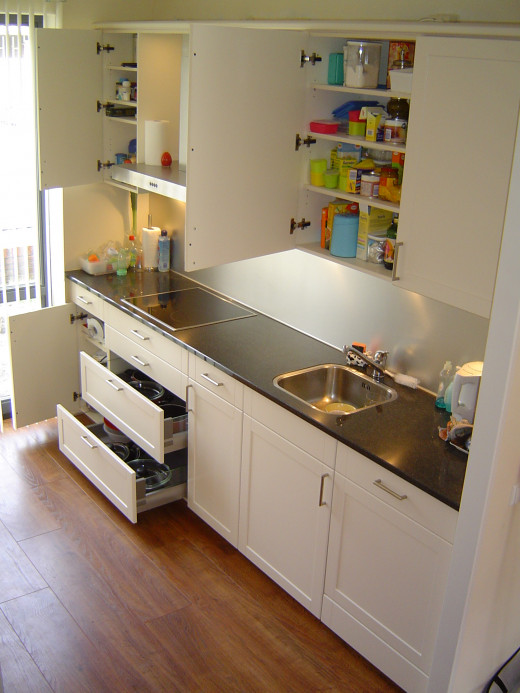
The Far Side of Clutter
At the far end of the spectrum of clutter is the true hoarding pack rat. Science has suggested various causes—depression, obsessive-compulsive disorder, even genetic abnormalities. For these people, behavioral therapy is generally needed. The worst cases, which come to the attention of the health department, may be unresponsive to therapy. But most of us looking for space, although we may be somewhat disorganized and a bit clingy about possessions, with time and discipline, we can get our messes under control.
Finally, I have a modest proposal for those of us whose domiciles will never make the pages of Better Homes and Gardens. For us, there could be a new magazine. One that could illustrate the not-so-bad, more-or-less presentable rooms that may not be works of art, but no longer invite a certificate of condemnation from Good Housekeeping. We might call it Home, Tidy Home, More or Less.
© 2013 Teddi DiCanio

